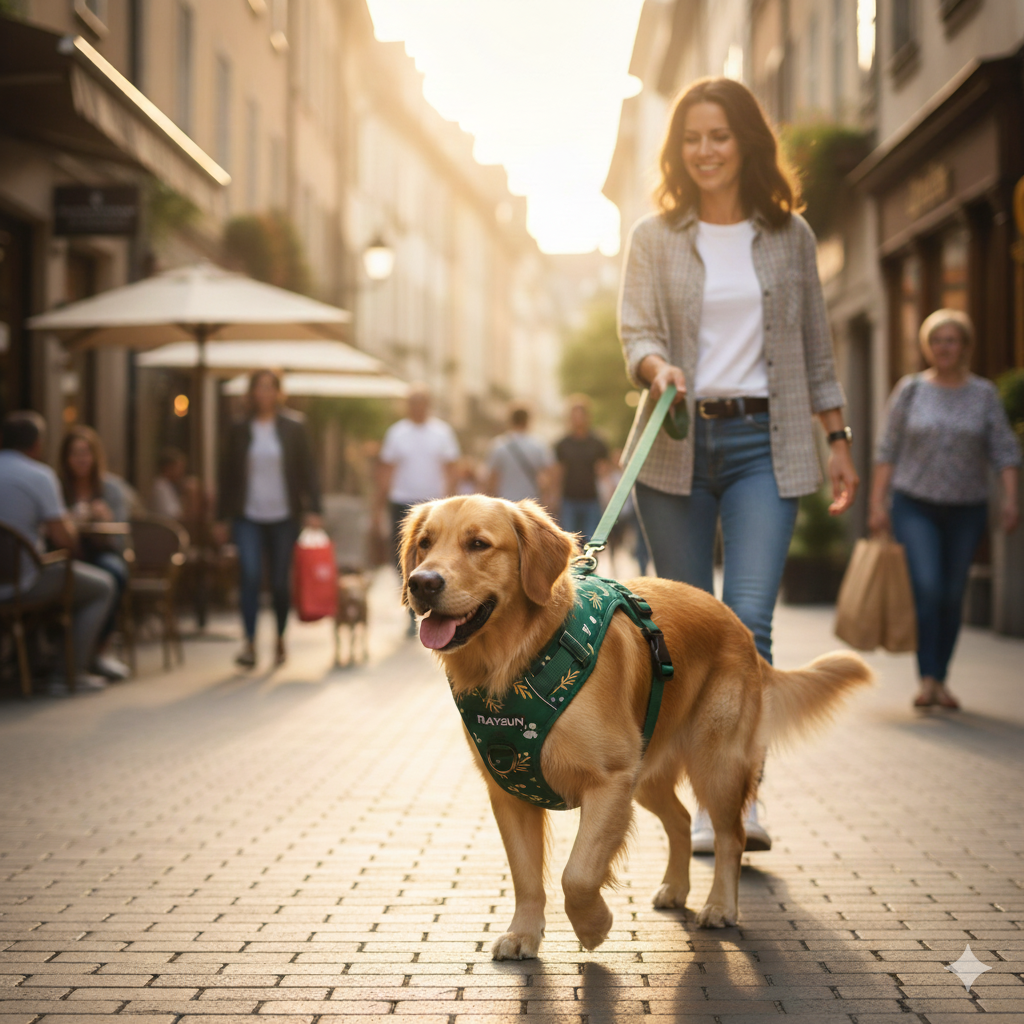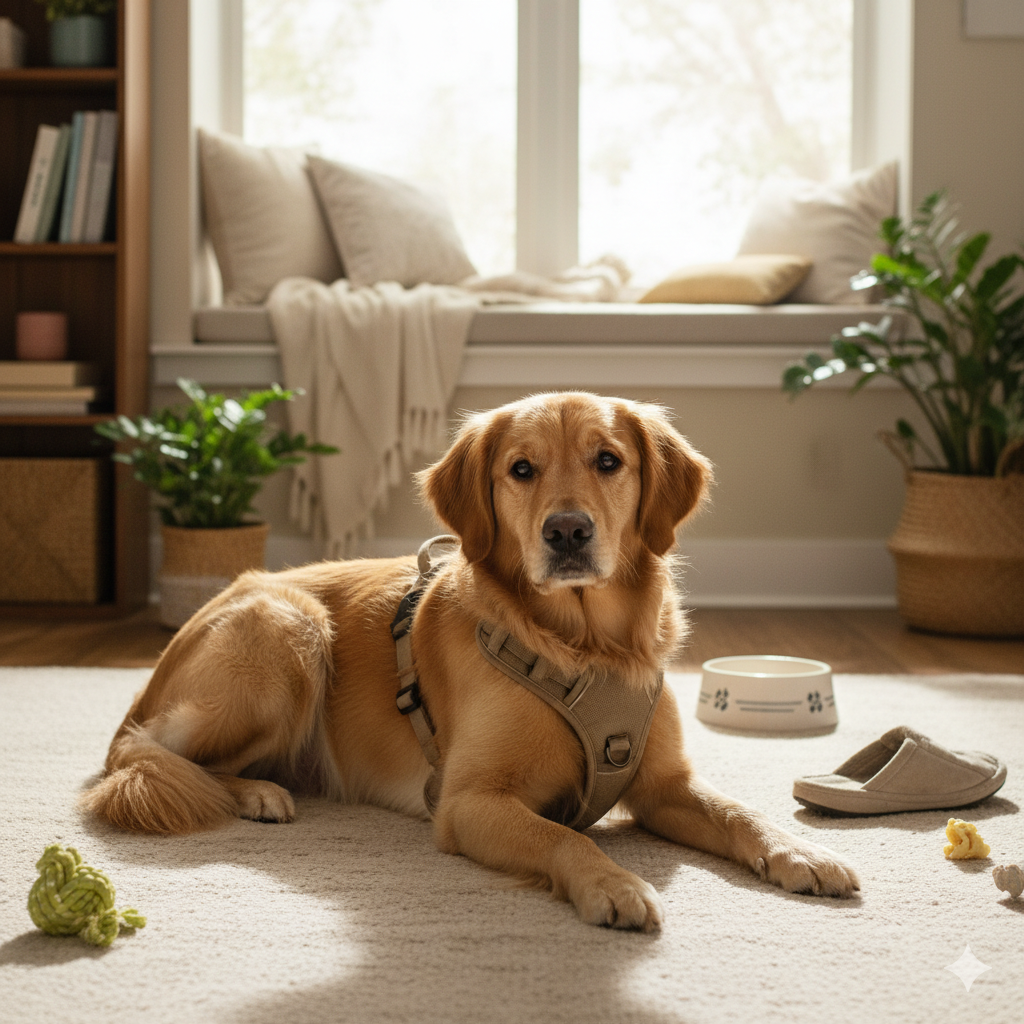Front-Clip vs. Back-Clip: Which Dog Harness is Actually Best for Your Dog?
Confused by harness options? The wrong harness can make walks stressful and unsafe for both you and your dog. I'll guide you to the perfect choice for your companion.
The best harness depends on your dog's training level. Front-clip harnesses excel at teaching dogs not to pull by redirecting them. Back-clip harnesses offer more comfort and freedom for well-behaved dogs or for activities like running, where the leash won't get tangled underfoot.

Choosing between a front-clip and a back-clip harness seems simple, but it's about more than just where the leash attaches. As a designer, I've seen firsthand how subtle differences in construction, materials, and ergonomics can completely change a dog's experience. Let's dig into the details so you can make an informed decision, whether you're a dog owner or a fellow designer. I want you to see why this choice matters so much.
Why Choose a Front-Clip Harness for Training and Control?
Is your dog still pulling on the leash? This can turn a pleasant walk into a frustrating battle of wills. A front-clip harness can provide immediate improvement and control.
A front-clip harness, often called a "no-pull" harness, works by gently redirecting your dog's forward momentum. When they pull, the leash attachment point at their chest turns them back towards you. This discourages pulling without causing pain and facilitates better leash training.

The principle behind a front-clip harness is simple but effective. Instead of engaging in a tug-of-war where the dog’s pulling force is met with your opposing force, this harness changes the game entirely. It uses a concept I call "gentle steering."
The Steering Mechanism
When a dog pulls on a standard back-clip harness, they can use their full body weight to lunge forward. This is because the force is applied along their spine, which is their strongest axis. A front-clip harness moves the anchor point to the dog's chest. When the dog pulls, the leash tightens and gently turns their torso and head back towards the handler. This redirection breaks their forward momentum and makes pulling much less rewarding. It’s not about force; it’s about changing the direction of the force. Over time, the dog learns that pulling just results in being turned around, and walking politely becomes the easier option.
Key Design Considerations
From a designer's perspective, the success of a front-clip harness hinges on one critical detail: the precise placement of the front D-ring. If it’s too low, the leash can easily get tangled in the dog’s legs, creating a tripping hazard. If it’s too high, it can ride up and put pressure on the soft tissues of the throat, defeating the purpose of a harness. I worked on one prototype where the D-ring was off by less than an inch, and it failed all our user testing with medium-sized dogs because it constantly tripped them. Reinforcement is also crucial. This D-ring is a major stress point and must be stitched into a multi-layered, reinforced section of webbing to prevent failure with strong pullers. The goal is always gentle redirection, not uncomfortable restriction.
When is a Back-Clip Harness the Superior Choice for Comfort and Activity?
Worried a harness might restrict your dog's natural movement? A standard back-clip design might be exactly what you need. It supports an active, comfortable lifestyle for your companion.
Back-clip harnesses are ideal for dogs who already walk well on a leash. The attachment point on the back prevents the leash from getting tangled in their legs, making it perfect for running, hiking, and everyday walks. It also allows for a more natural gait and movement.

For dogs who don't have a pulling problem, a back-clip harness is often the gold standard for good reason. It prioritizes comfort and freedom, making it the go-to choice for a wide range of dogs and activities. The design allows the dog to move without the potential awkwardness that some dogs feel with a front-clip harness.
Prioritizing Comfort and Freedom
The primary advantage of a back-clip harness is its ergonomic design. The force of the leash is distributed evenly across the strongest parts of the dog's body—the chest and back—without interfering with the front legs. This allows for a full, natural range of motion in the shoulders, which is essential for both comfort on long walks and performance during athletic activities. As designers, this is where material selection becomes critical. I remember designing one of our first hiking harnesses. We focused so much on durable nylon and strong stitching that we overlooked comfort. Early testers reported chafing after just a few miles. We went back to the drawing board and switched the lining to a padded, moisture-wicking neoprene with soft, rounded edges. It taught me a valuable lesson: for a harness meant to be worn for hours, comfort is just as important as structural integrity.
Applications Beyond Walking
The back D-ring is a versatile anchor point that opens up a world of possibilities beyond a simple neighborhood walk. It’s the standard attachment point for car safety tethers, keeping a dog secure during travel. For more athletic pursuits like canicross (running with your dog) or hiking in rough terrain, a back-clip harness ensures the leash stays clear of obstacles and the dog’s legs. The load point on the back is also ideal for attaching handles, which are great for helping a dog over obstacles or providing assistance for senior dogs who need a little support getting up stairs or into a car.
What Key Design and Material Differences Should We Balance?
Choosing a harness style is only half the battle. Poor materials or construction can lead to failure at the worst possible moment. Let's ensure your design is safe and durable.
The biggest difference is the location of the primary stress point. Front-clip harnesses need reinforced chest D-rings, while back-clip harnesses require robust back D-rings and strong spine panels. Material choice, like padded mesh for comfort or durable nylon for strength, directly impacts both function and cost.

As someone who has spent years designing and consulting on dog gear, I can tell you that the details make or break a harness. The choice between a front-clip and back-clip design dictates not just the user experience but the entire engineering and material strategy. Balancing cost, durability, safety, and comfort is the central challenge for any product designer in this field.
Hardware and Stress Points
The hardware, specifically the D-rings and buckles, are critical safety components. I always advise my clients to never cut corners here. I have seen cheap, unbranded plastic buckles shatter in cold weather or snap under the force of a strong, sudden pull. For any harness intended for dogs over 20 pounds, I strongly recommend using hardware from reputable suppliers like Duraflex or investing in lightweight aluminum or stainless steel components. A front-clip design puts unique stress on the chest ring, which must be secured with reinforced box stitching through multiple layers of webbing. In a back-clip harness, the D-ring must be anchored to webbing that runs along the dog's spine to distribute the load effectively.
Fabric and Webbing Choices
The fabric choices define the harness's comfort and durability. This is where we, as designers, can truly innovate. The webbing provides the core strength, with nylon being a common choice for its durability and high tensile strength. However, we also have to consider padding. A back-clip harness designed for all-day adventures should feature ample padding with breathable materials like air mesh to prevent overheating and chafing. A front-clip training harness might use less padding to ensure a snug, non-slip fit. The table below outlines some key differences.
| Feature | Front-Clip Harness | Back-Clip Harness | Design Consideration |
|---|---|---|---|
| Primary D-Ring | Chest-mounted | Back-mounted | Front-clip requires strong reinforcement to handle redirection force. Back-clip needs a D-ring securely anchored to the spine. |
| Webbing | Often simpler, with a focus on strength and a non-slip fit. | Can be wider with more integrated padding for long-term wear. | Back-clip models are often worn longer, so comfort from materials like padded nylon or neoprene-lined webbing is key. |
| Buckles | Standard placement on sides/back. | Standard placement on sides/back. | Critical safety point for both. Side-release buckles should be high-quality polymer or metal to prevent failure under load. |
| Adjustability | 4-5 points are crucial for a proper fit. | 2-4 points are often sufficient. | Proper front-clip function depends entirely on a snug, high-chest fit to prevent shifting and ensure effective redirection. |
| Padding | Often minimal to maintain a secure fit. | Essential around the chest/back for comfort. | Comfort is a major selling point for back-clip harnesses, making breathable mesh or neoprene padding a must-have feature. |
Conclusion
Ultimately, the best harness depends on your dog's specific needs. A front-clip is for training pullers, while a back-clip is for comfort and activity. Many modern designs offer both.
Cindy Long is the Sales Manager of Raysunpets and a pet lover with over 12 years of experience in exporting pet products. She specializes in providing customized dog chest carriers, leashes and pet accessory solutions for the European and American markets, always focusing on the real needs of customers and pets, and is committed to creating high-quality, practical and comfortable products that allow fur kids to live happier lives.


